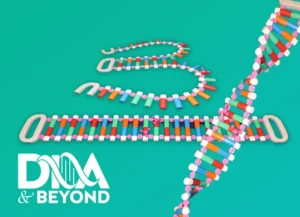DNA is usually amassed together in one location within the cell, so that it functions like a central library. We call this DNA-library; the genome, and the genome in most cells (including human cells) is stored inside a large spherical structure called the nucleus. To make the role of the genome within the cell more clear, here are some helpful comparisons:
• The co-authors of this guide attended Princeton University, where Firestone Library, the central library of the campus, houses over five million books. If the Princeton campus is parallel to our cell, the Firestone Library building is the nucleus, and the five million books inside are the genome.
• Or think of a laptop: if the computer as a whole is our cell, the hard drive would be the nucleus, and the total set of real files stored on the hard drive are the genome.
• Or, to give a third example, think of a busy kitchen, like that of the late American cook, Julia Child, known for her wonderful French cuisine. Her kitchen would be the cell, her huge box of recipes would be the nucleus, and what’s contained inside – detailed instructions for crafting over a thousand yummy dishes –would be the genome.


